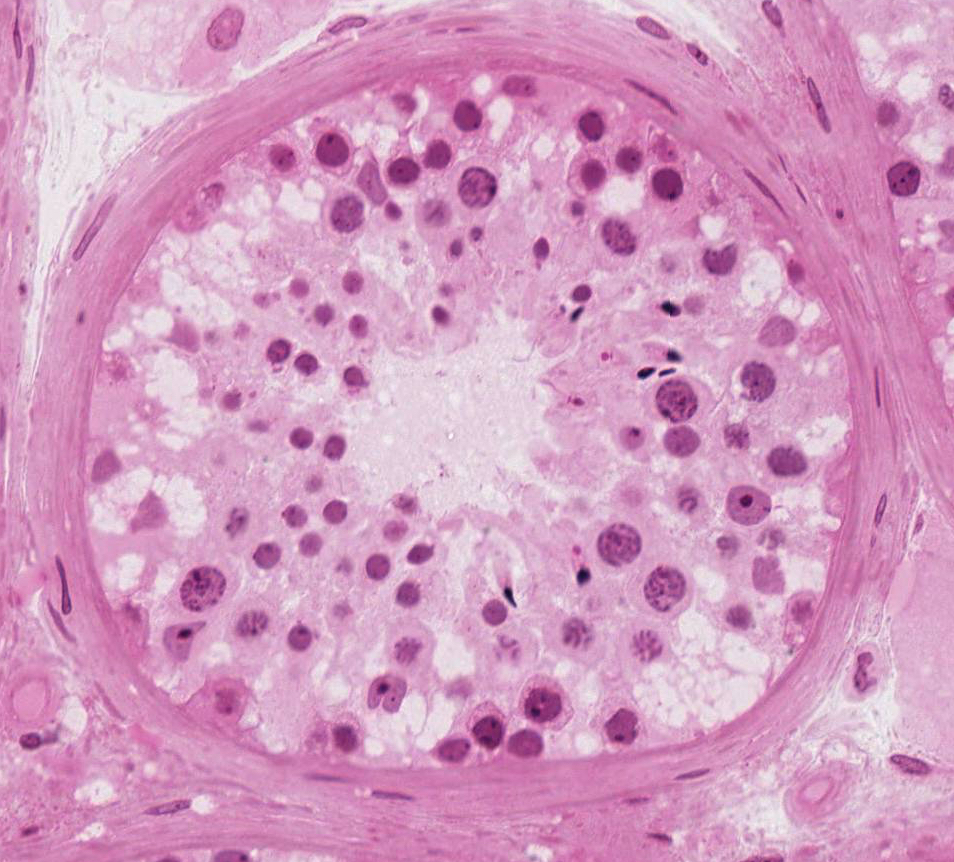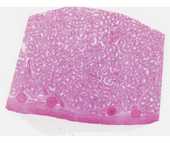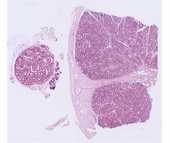Testis and Epididymis
#56 Testis, Adult, H&E
At low magnification identify the tunica albuginea, the fibrous capsule surrounding the testis. The mediastinum (not visible on this slide) is the mass of acidophilic connective tissue at one pole through which the major vessels enter and leave the testis. The rete testis is located in the mediastinum.
 At higher magnification identify the germinal elements (spermatogonia, spermatocytes and spermatids) and Sertoli cells in the seminiferous tubules. Only the Sertoli cells and spermatogonia (usually with interphase nuclei) rest on the basement membrane. The larger primary spermatocytes lie on the luminal side of the Sertoli cells and are frequently in some stage of the prolonged prophase of the first meiotic division. Secondary spermatocytes rapidly undergo the second meiotic division and are therefore rarely seen. During spermiogenesis the spermatids are remodeled into streamlined motile cells called spermatozoa. The entire process of gamete production (i.e., spermatogonia to spermatozoa) is known as spermatogenesis. The germinal elements characteristically occur in small associations of synchronized cells. Beneath the basement membrane of the tubules note the myoid cells (myoepithelium) with their pale-staining elongated nuclei.
At higher magnification identify the germinal elements (spermatogonia, spermatocytes and spermatids) and Sertoli cells in the seminiferous tubules. Only the Sertoli cells and spermatogonia (usually with interphase nuclei) rest on the basement membrane. The larger primary spermatocytes lie on the luminal side of the Sertoli cells and are frequently in some stage of the prolonged prophase of the first meiotic division. Secondary spermatocytes rapidly undergo the second meiotic division and are therefore rarely seen. During spermiogenesis the spermatids are remodeled into streamlined motile cells called spermatozoa. The entire process of gamete production (i.e., spermatogonia to spermatozoa) is known as spermatogenesis. The germinal elements characteristically occur in small associations of synchronized cells. Beneath the basement membrane of the tubules note the myoid cells (myoepithelium) with their pale-staining elongated nuclei.
In the interstitium (between the seminiferous tubules) identify Leydig cells, which are large eosinophilic cells. Why are they eosinophilic?
#57 Testis and Epididymis, (H&E)
Be sure that you distinguish the testis and the epididymis. 
The epididymis is the site of maturation and the storage of spermatozoa. It is a coiled tube lined by pseudostratified epithelium with long microvilli (non-motile stereocilia). Sperm are stored in the tail (cauda) of the epididymis.
Note: For the histological characteristics of the efferent ductules see examples in textbooks or online.

